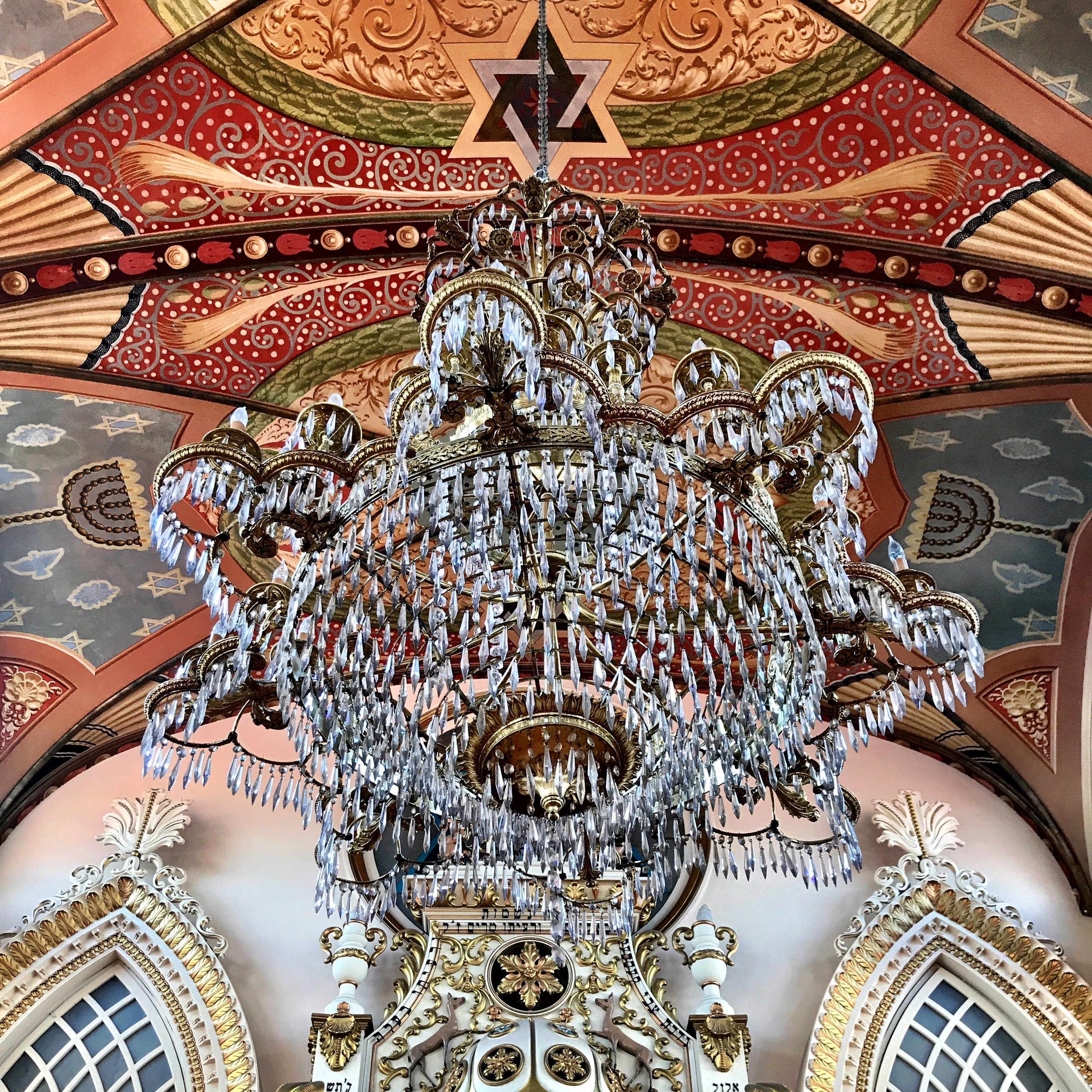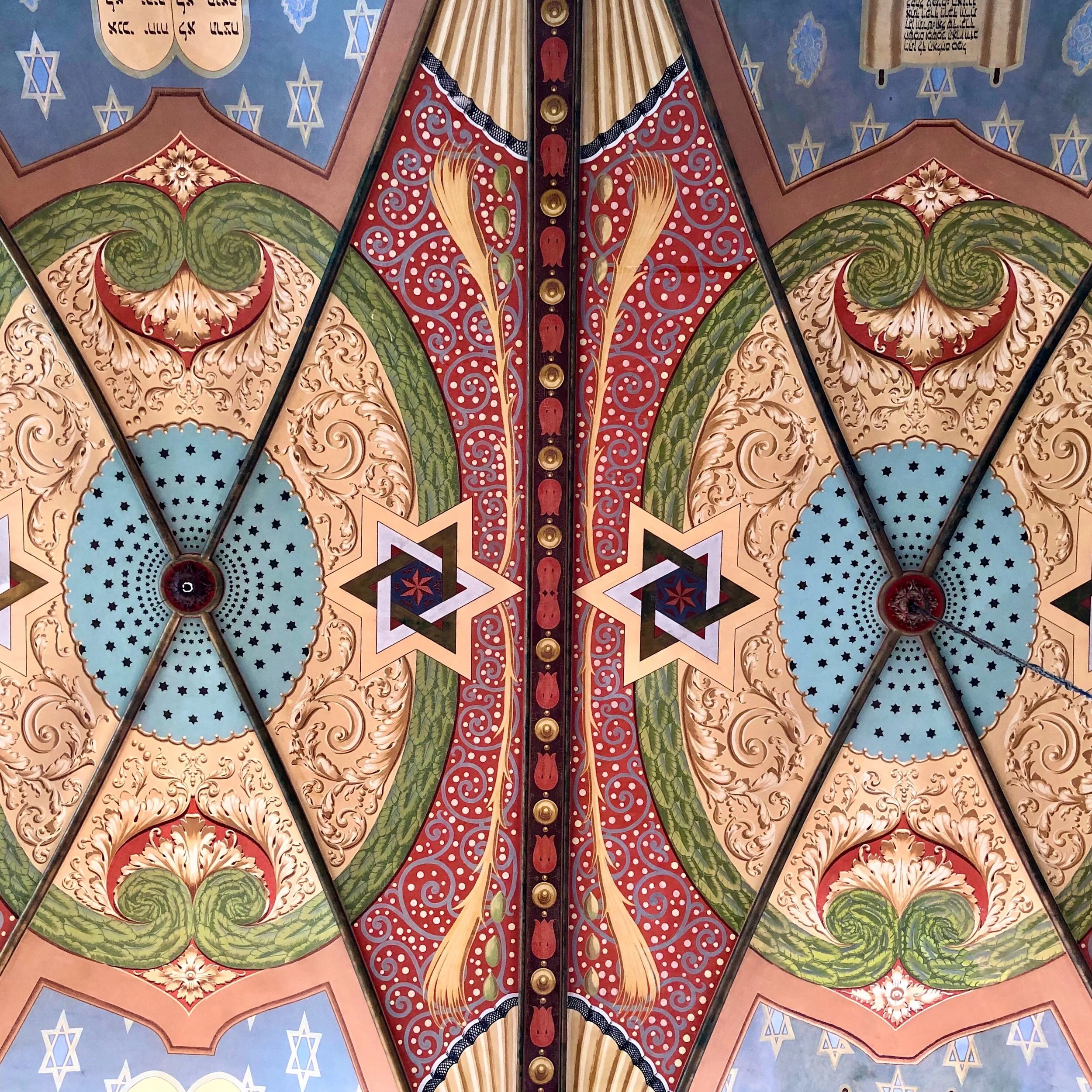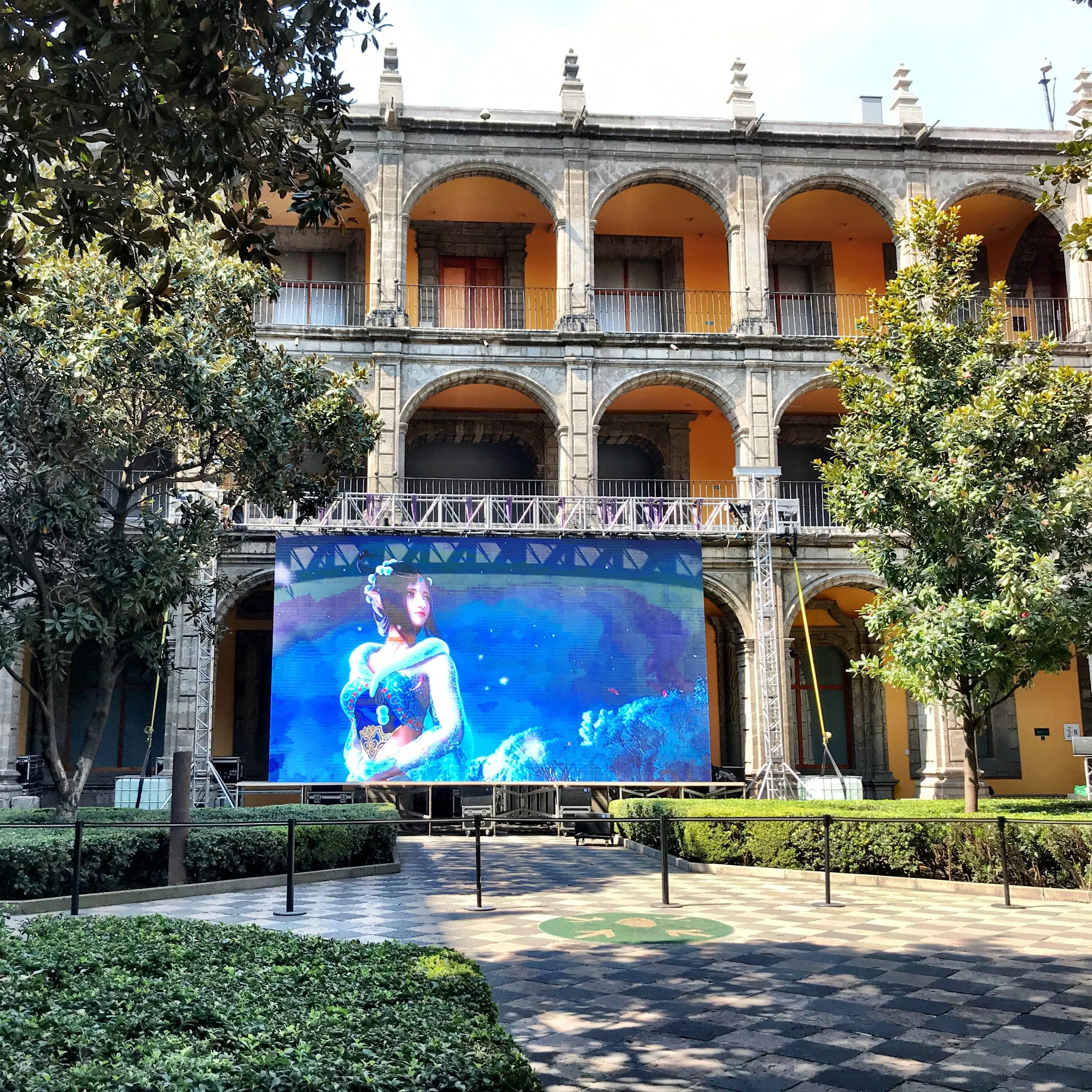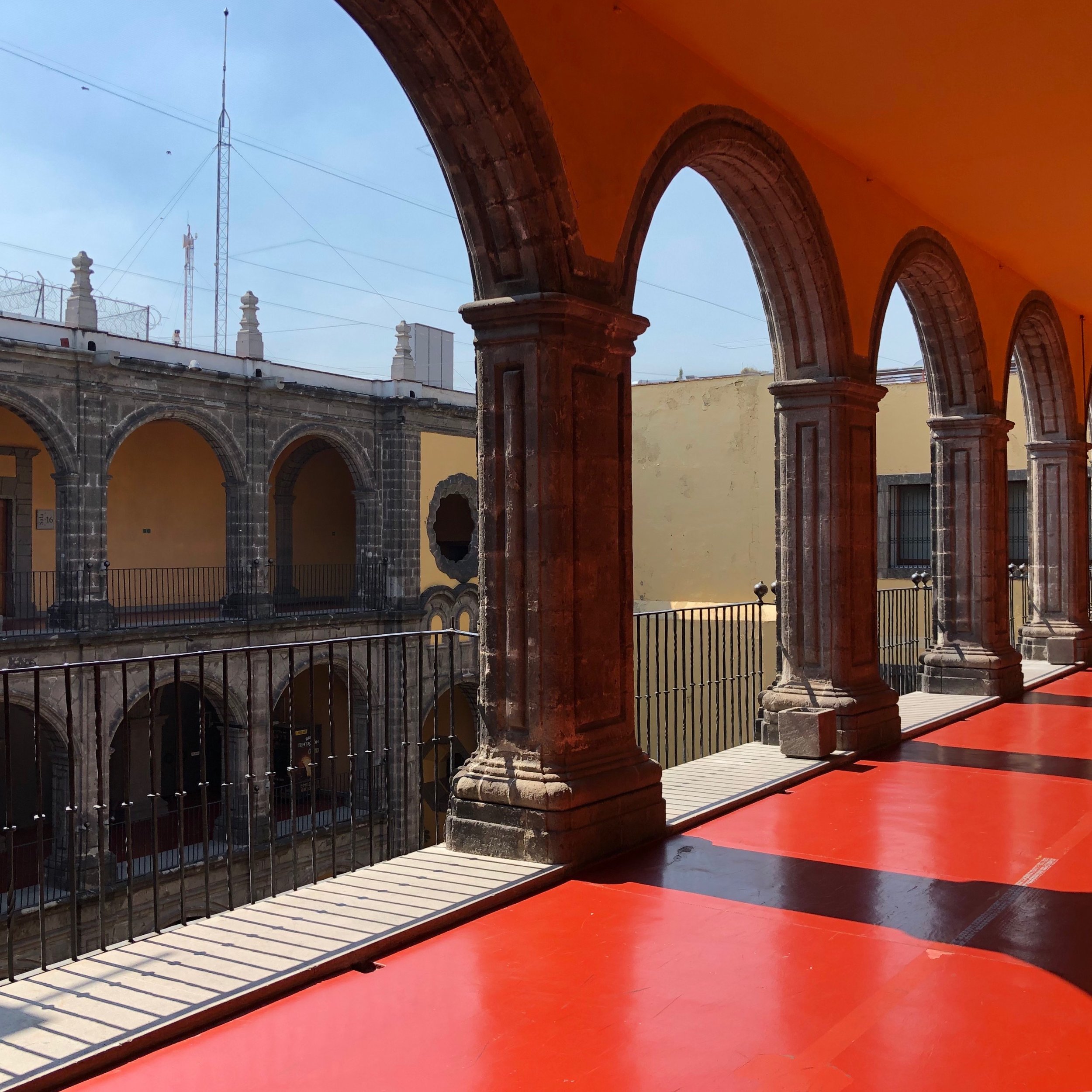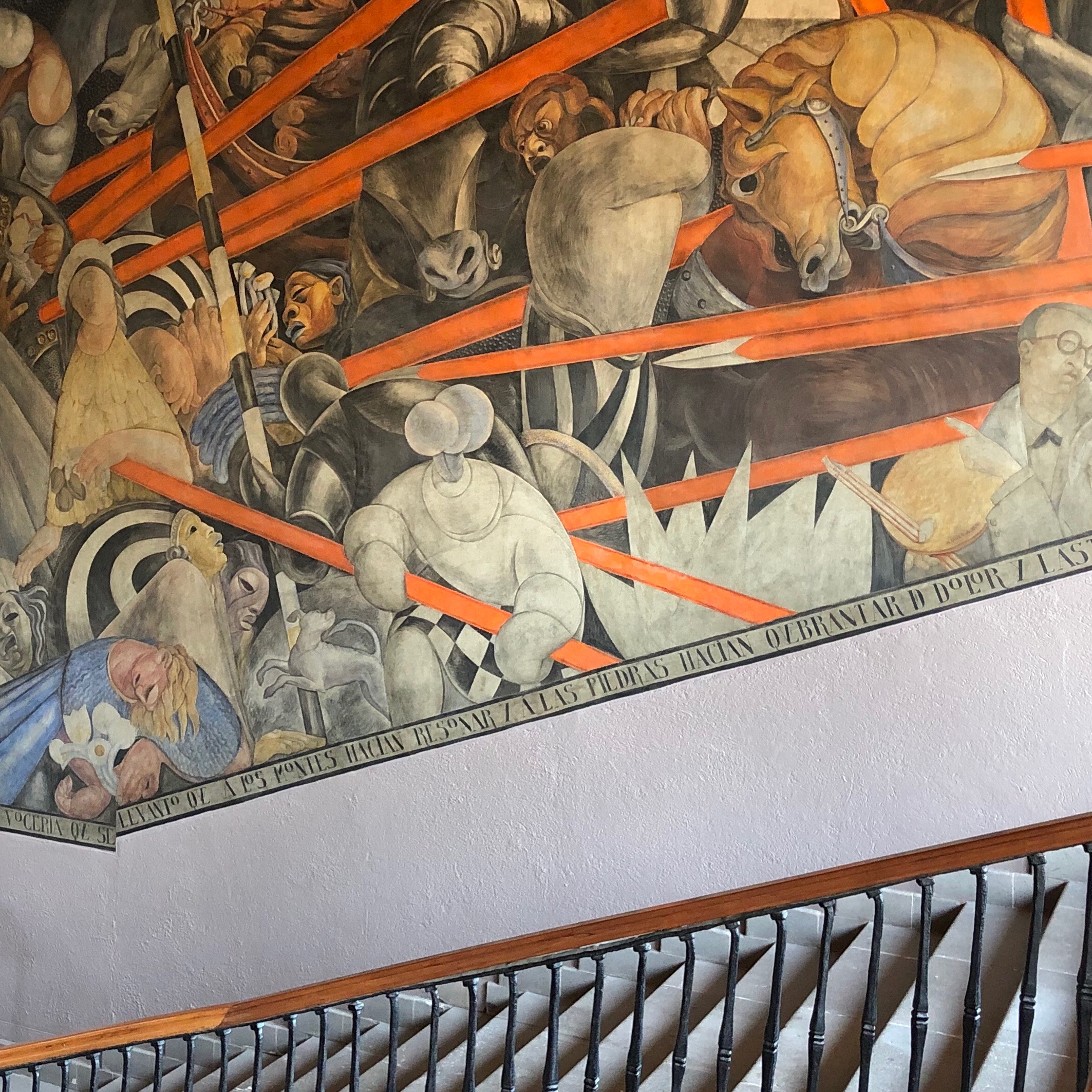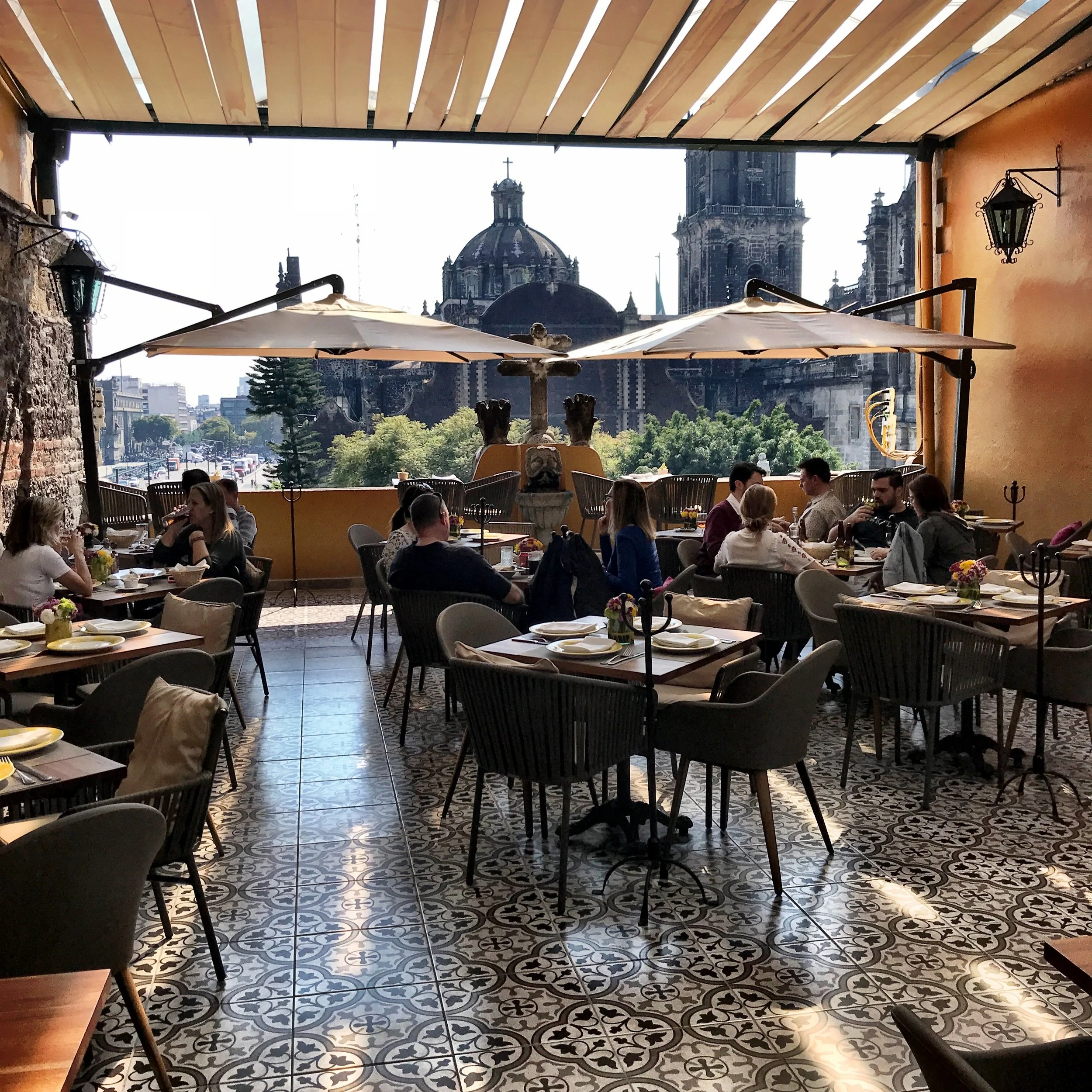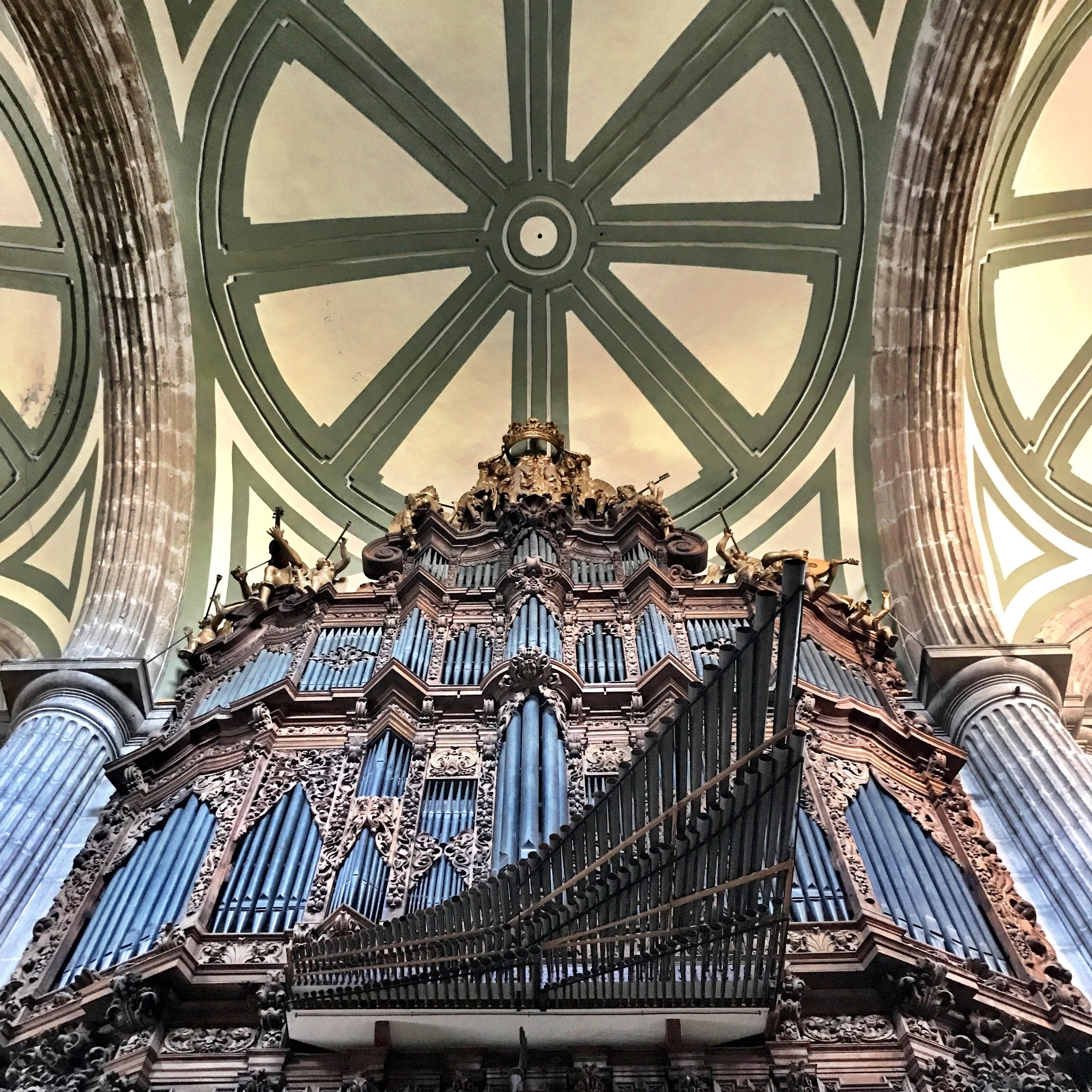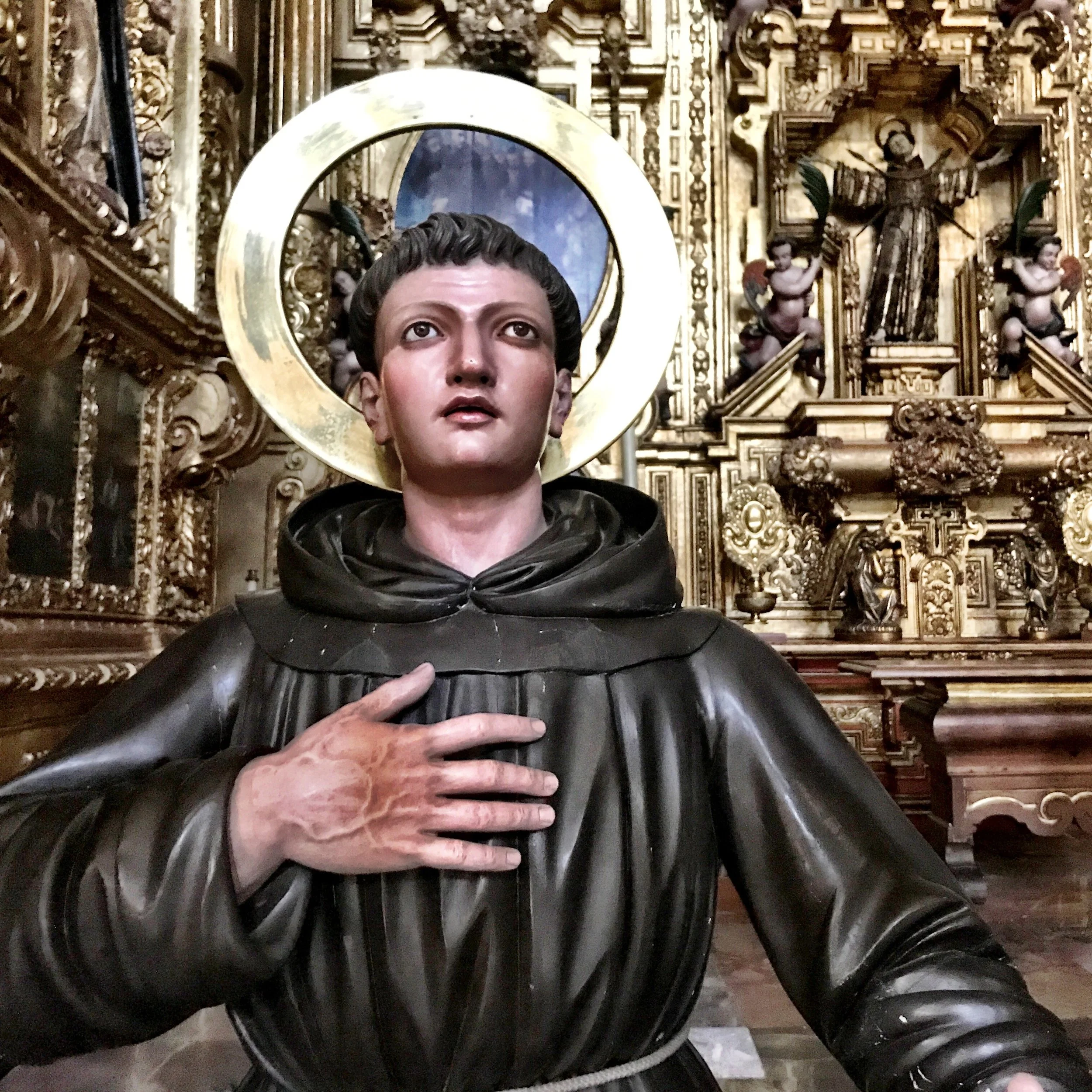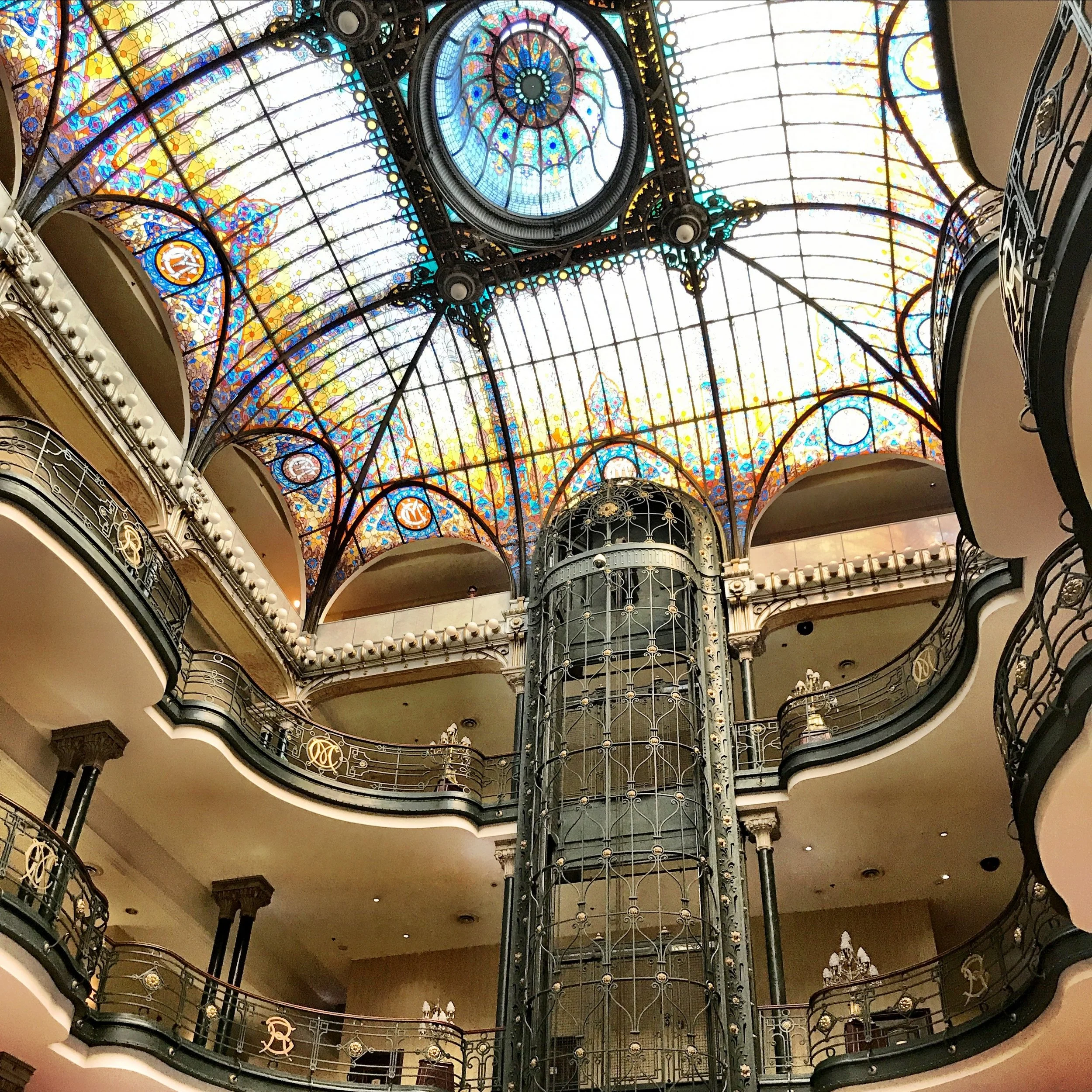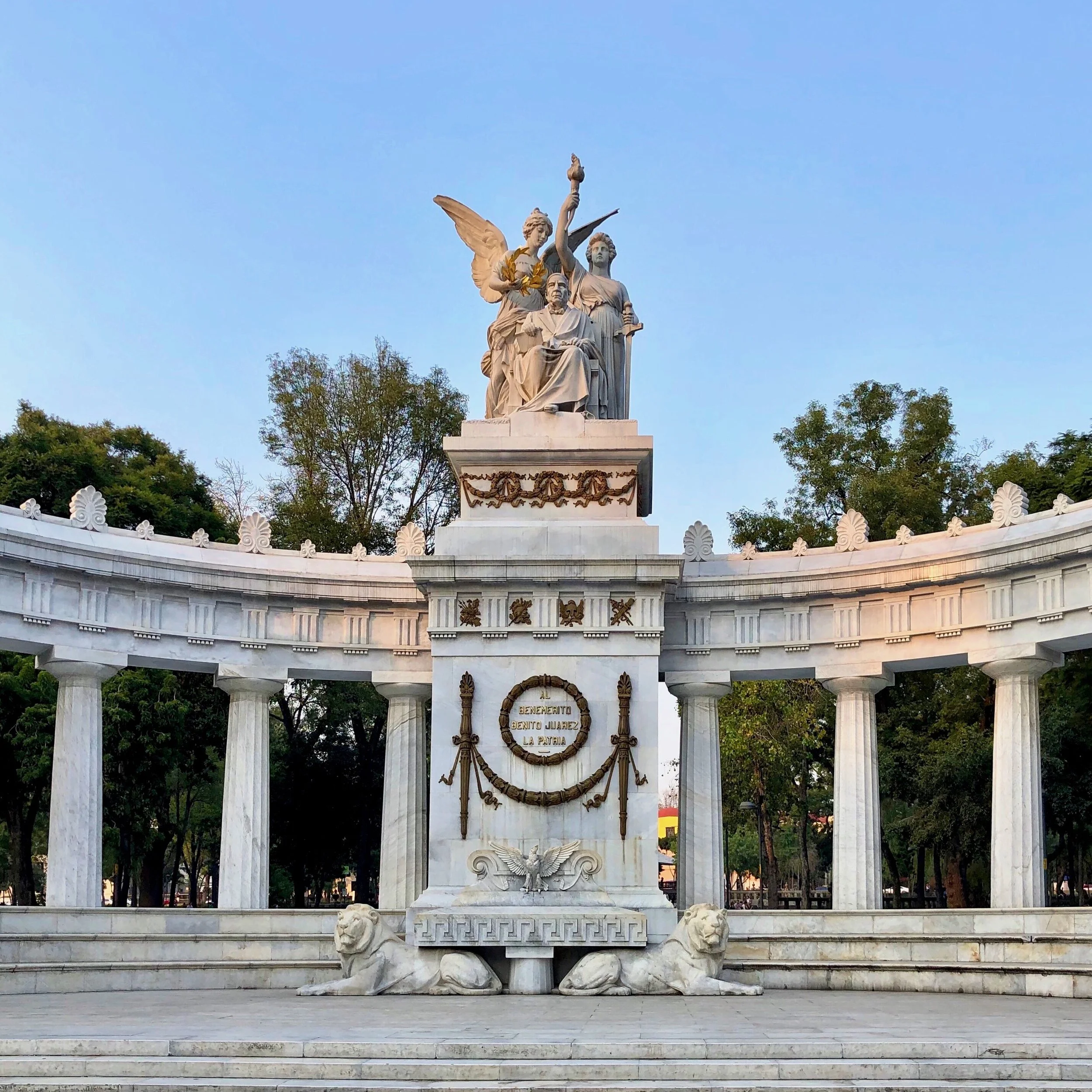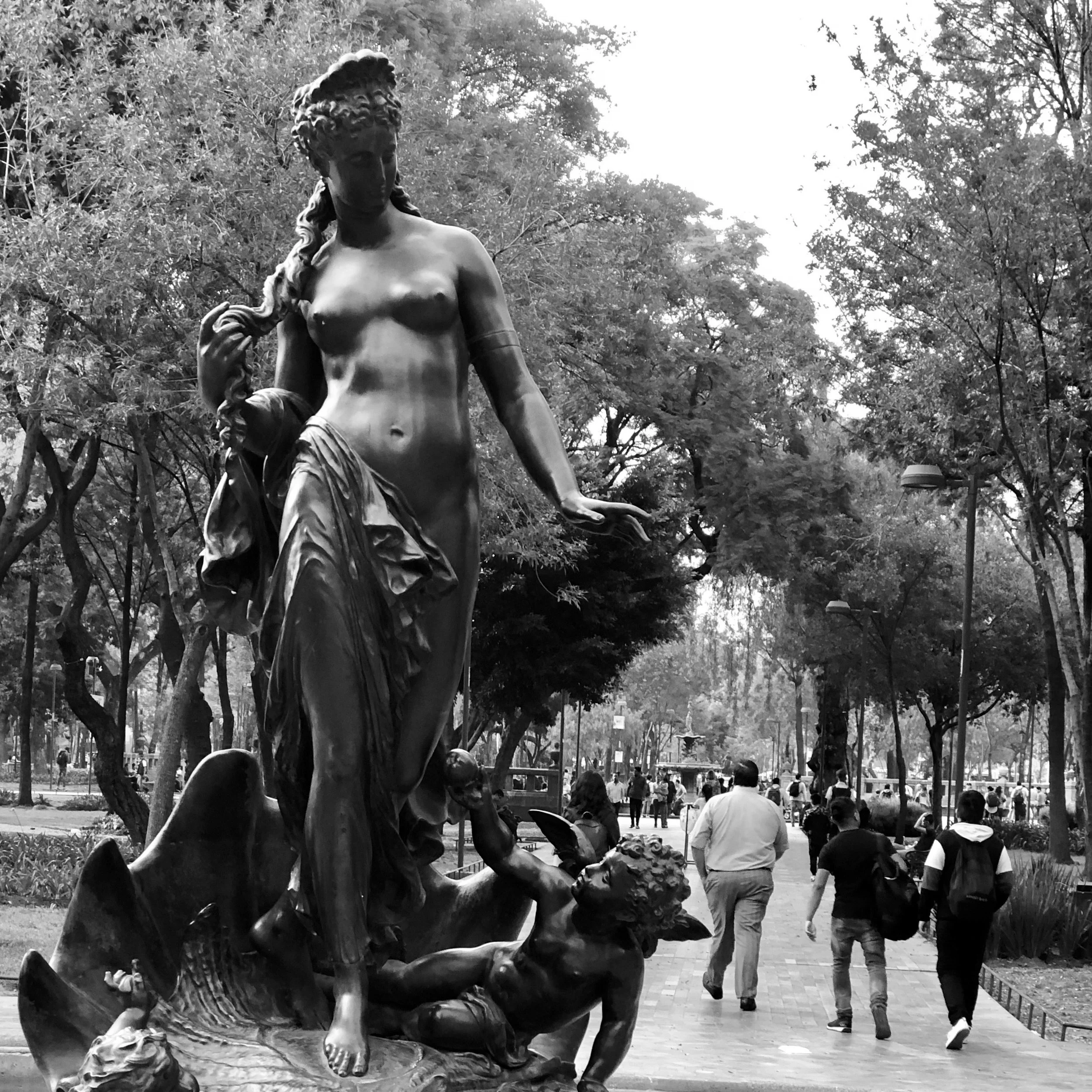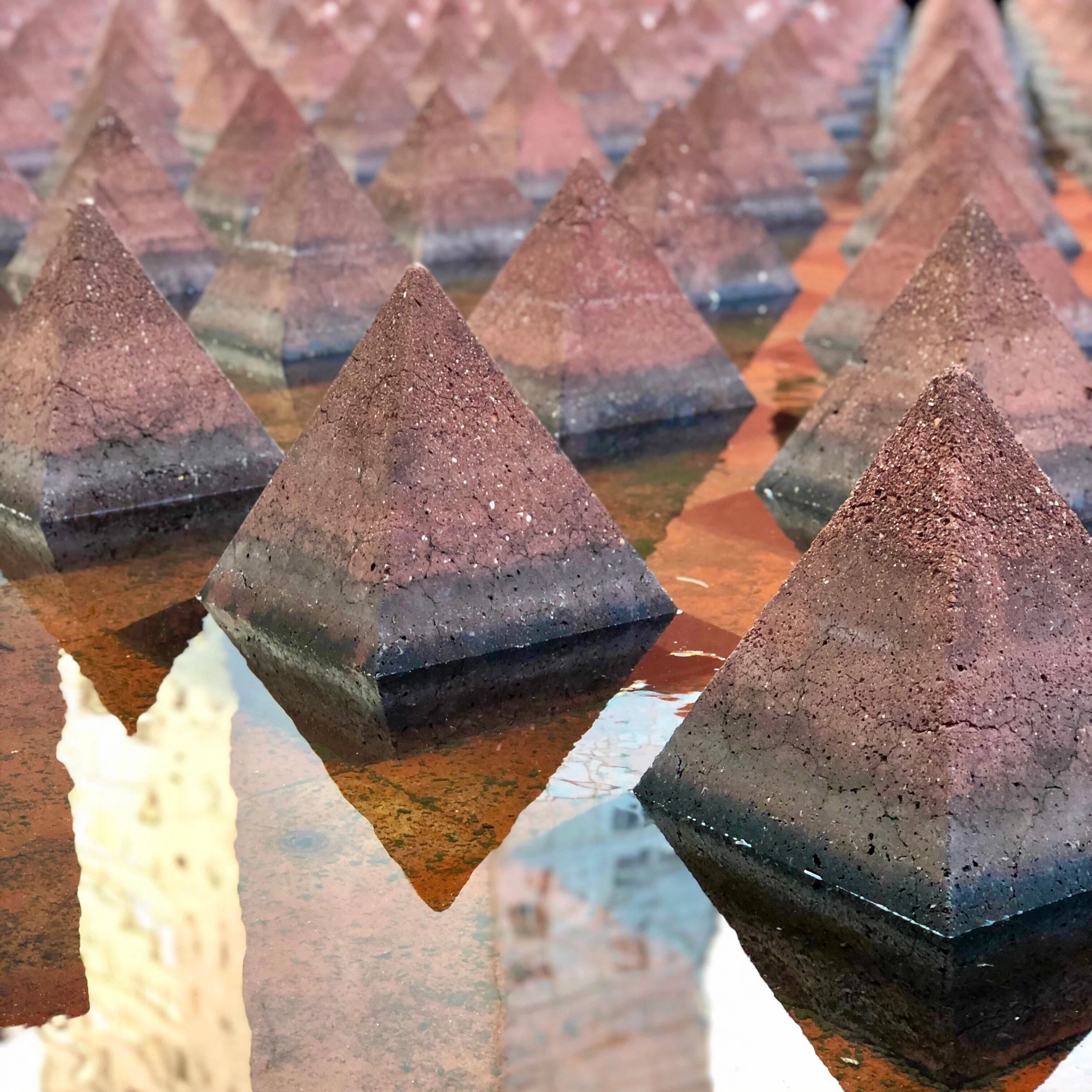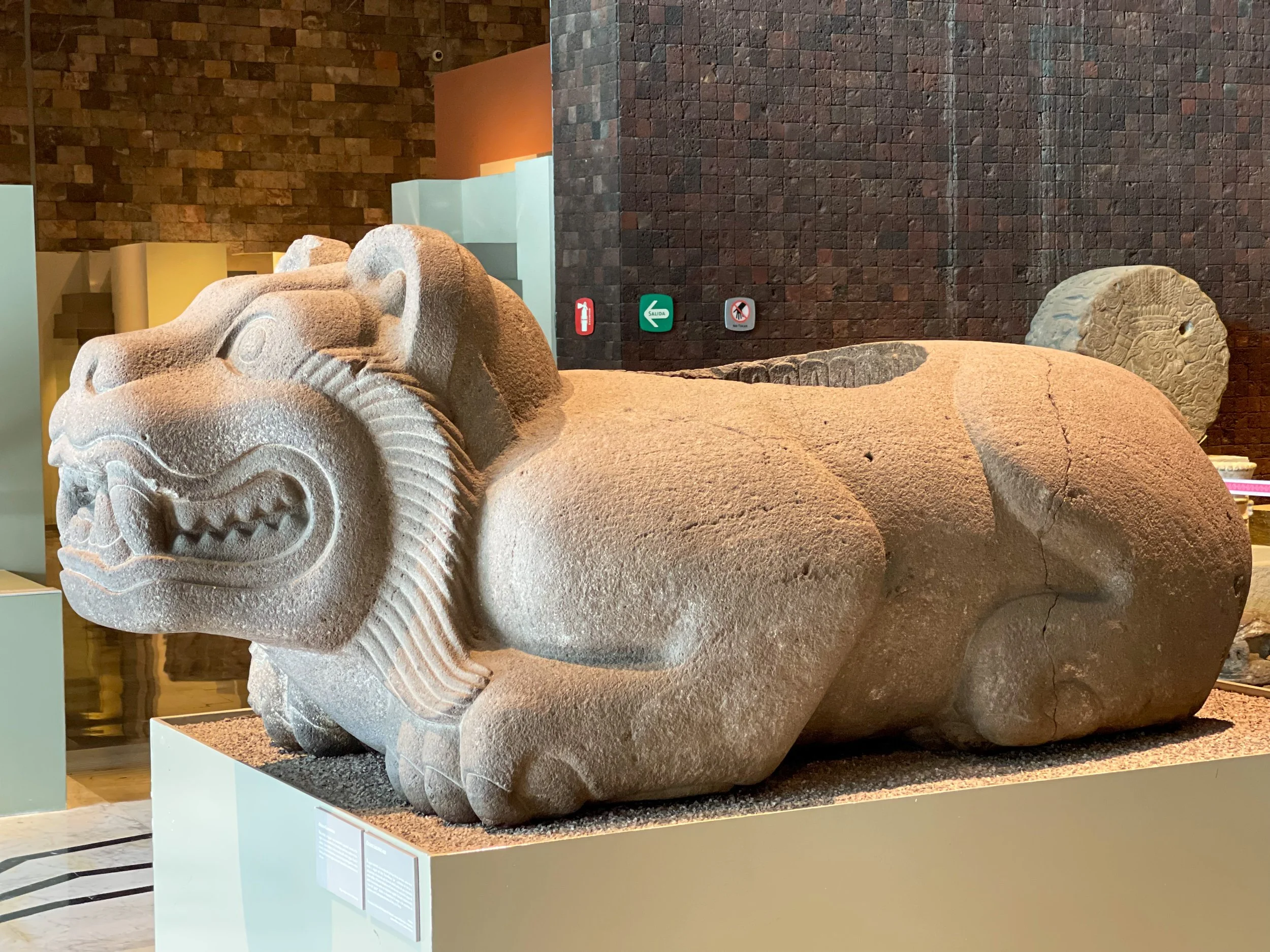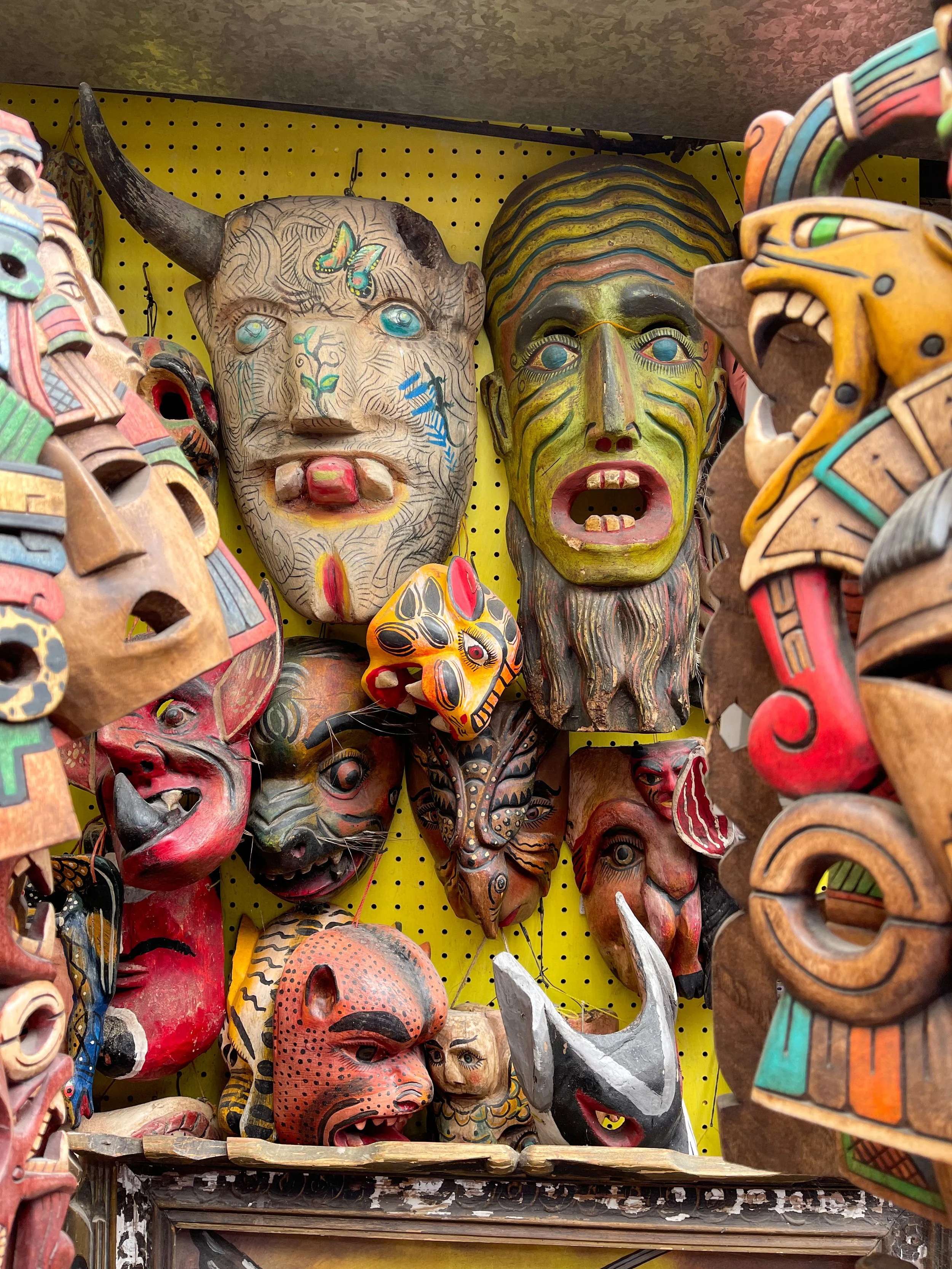A photographer’s tour of the CDMX historic district, from the Palacio de Bellas Artes to the Gran Hotel Ciudad de México.
CDMX, as the cool kids call it, is full of stunning design, a mind-blowing mix of colonial architecture and modern marvels. Here are some of our favorites to help you get started on a cultural and Insta-worthy tour of the city’s historic heart.
Centro Histórico
A chandelier hangs above the holy ark
The second and third floors of the Sinagoga Histórica have some beautiful elements
Look up to see the folk art-styled ceiling, with its gorgeous color pallette
1. Sinagoga Histórica Justo Sierra 71
Start your tour with this hidden gem, built and established by the Ashkenazi, Eastern European Jews who arrived in Mexico City as refugees escaping persecution in the early 1940s. The Historic Synagogue, or Templo Nidje Israel, is entered through an interior courtyard beyond the building’s colonial façade (and a somewhat grumpy guard).
The interior contains a rather plain assembly hall on the first floor, but the sanctuary located on the second floor is impressive, said to be modeled after a synagogue in Lithuania. Make sure to look up at the vaulted clerestory ceiling intricately painted in hues of rust, mustard yellow, blue and green. An elaborately carved platform stands in the center of the room and faces the richly ornamented aron kodesh, or holy ark, surrounded by folk art elements typical of Eastern European villages. The sacred Torah scrolls were once kept behind the blue velvet curtain panel embroidered with silver thread.
Justo Sierra 71
What seemed to be a bizarre fantasy video game ad was playing in the courtyard while we visited
Open archways line the corridors of the ex-college
You’ll spot murals all over the Antiguo Colegio de San Ildefonso
2. Antiguo Colegio de San Ildefonso
A block or so down from the synagogue is a former Jesuit boarding school that has since been transformed into a museum and cultural center. After the Jesuits were expelled from the city, the building temporarily served as barracks for the Mexican army before becoming the National Preparatory School. The site is considered to be the birthplace of the Mexican muralism movement and features murals painted by David Alfaro, José Clemente Orozco (Wally’s personal fave) and Diego Rivera.
Justo Sierra 16
La Casa de las Sirenas is located within one of the first colonial mansions in Mexico City
Our al fresco meal was delicious
Grab a bite on the rooftop terrace, which overlooks the back of the cathedral
3. La Casa de las Sirenas
The frieze on the façade of this former 17th century colonial abode features a Caravaca cross flanked by a pair of mermaids, which gives the restaurant its name, the House of the Mermaids.
We ate a delicious lunch on the rooftop terrace with a spectacular view overlooking the extremely disappointing Templo Mayor and the back of the impressive Catedral Metropolitana, while an organ grinder played a whimsical tune over and over from the street below.
República de Guatemala 32
The Metropolitan Cathedral organ
This over-the-top golden altar is just one of many inside the massive cathedral
Saints galore in various niches in this Baroque church — note the highly realistic detail on his hand
4. Mexico City Metropolitan Cathedral
This massive Baroque-style cathedral dominating the northern side of the Zócalo plaza was built in stages between 1573 to 1873, shortly after Hernán Cortés and his conquistadors defeated the Aztec Empire. Among the oldest and largest cathedrals in the Americas, much of it was built using stones pilfered from the Templo Mayor. (Maybe that’s why the temple’s ruins are so unimpressive.) Step inside to see the large, ornate Altar of the Kings, collection of paintings, pipe organ and statuary.
Plaza de la Constitución s/n
Pop into the lobby of the Gran Hotel to marvel at the stained glass ceiling and ironwork
The curving balconies and organic grillwork on the cage elevators make this Art Nouveau gem worth a shot or two
5. Gran Hotel Ciudad de México
After binge-watching the Spanish soap series Gran Hotel on Netflix, we had to go inside this historic Art Nouveau gem of the same name. It was originally the city’s most luxurious department store, known as el Centro Mercanti — in fact, you can still see the monogram “CM” in the stained-glass ceiling designed by French glass artist Jacques Grüber as well as the railings. Fun fact: The interior is featured in the opening scenes of the James Bond film Spectre.
16 de Septiembre 82
This building is known colloquially as the House of Tiles
This distinctive tiled building is now a Sanborns department store
6. Casa de los Azulejos
Meaning “the House of Tiles” in Spanish, the exterior of this 16th century building is embellished with tin-glazed ceramic tilework known as azulejos, from Puebla, Mexico. The property was originally the residence of the Valle de Orizaba counts, one of the wealthiest families in the country. It was purchased by brothers Walter and Frank Sanborn in 1919 and converted into the flagship location of Sanborns, a Mexican department store and restaurant chain.
Av Francisco I. Madero 4
Since you’re in the area, you should pop into the Palacio Postal just to check out the amazing staircase
Things are looking up at the Postal Palace
7. Palacio Postal
Also known as the Correo Mayor, the Postal Palace was built by Italian architect Adamo Boari and Mexican engineer Gonzalo Garita and has been in continuous operation since it first opened in 1907. The interior was restored to its original gilded splendor with the help of Boari’s granddaughter, who had the original building plans in Italy. The money shot is of a pair of grand interconnecting staircases embellished with vegetal brass balustrades that almost appear to be alive. My only regret is that we weren’t able to send a postcard home while there.
C. Tacuba 1, Cuauhtémoc
To get this money shot, you have to go into the Sears department store across the street
8. Palacio de Bellas Artes
We didn’t get to go inside on this visit. But the secret to an amazing aerial shot is to head over to the Sears department store directly across the street. (If you don’t want to have a snack or drink on the balcony café, just go up one more floor and press your camera against the glass as we did.)
Designed by the same architect as the Palacio Postal, the building’s gorgeously photogenic Art Nouveau exterior is topped by a lattice of iron and a shimmering iridescent ombre-tiled dome. At the very top, the Mexican eagle perches on a cactus with a serpent in its beak, with the four figures beneath representing the personifications of the dramatic arts.
The plaza includes various sculptures, including four Pegasus statues designed by Catalan Agustí Querol Subirats, as well as the famous Mexico City Olympics logo — way too popular with tourists to get a good picture of.
Av. Juárez
The Hemiciclo a Benito Juárez monument
A large green space sits right next to the plaza of the Palacio de Bellas Artes
9. Alameda Central
This leafy park was created in 1525 on what was previously the site of an Aztec marketplace. Its name comes from the word alámo, Spanish for poplar tree — which can be found in abundance throughout the park. You’ll encounter children playing in empty fountain basins and locals of all ages meandering or sitting on benches along the many paths. The Kiosco Morisco was located there briefly and used as a pavilion to announce lottery winners before being moved to make way for the semicircular Neoclassical Hemiciclo a Benito Juárez monument, dedicated to the former Mexican president.
Av. Hidalgo s/n
This fountain is right across from Alameda Central and is worth a quick visit to get the Insta shot
Governmental buildings and the Museum of Memory and Tolerance surround the fountain
País de Volcanes (Country of Volcanoes) by Ricardo Legorreta
10. Fuente de Vicente Rojo
Across from Alameda Park, tucked into the courtyard of the Museo Memoria y Tolerancia surrounded by governmental offices is a fountain designed by Mexican visual artist Vicente Rojo and architect Ricardo Legorreta. Titled País de Volcanes (Country of Volcanoes), it features more than 1,000 small burnt red concrete pyramids emerging from a sunken reflecting pool, a reference to the coarse volcanic tezontle stone widely used by the Aztecs. –Duke
Av. Juárez 44

